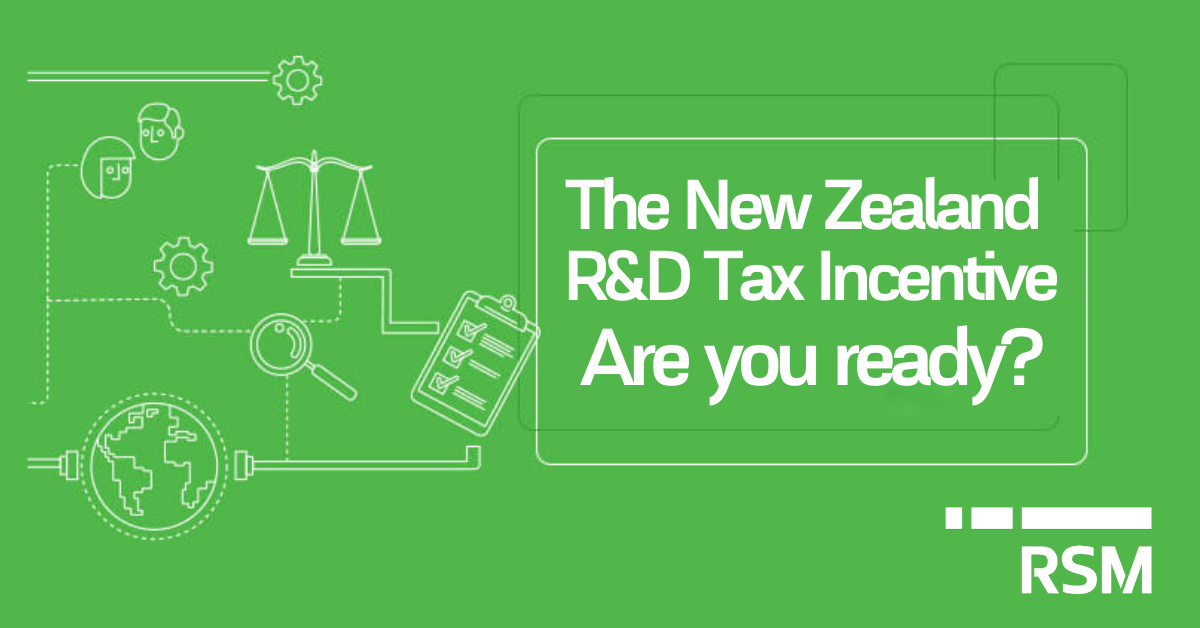
The new R&D Tax Incentive (RDTI) is available from the beginning of a businesses' 2019-20 income year. Legislation is effective from 1 April 2019 but with application for the 2019-20 and later income years. This means that the first opportunity for eligible entities with standard balance dates will be for the year ending 31 March 2020.
The time period to submit an R&D return and access the generous cash benefits is rapidly approaching. For other entities with non-standard balance dates for the 2019-20 income year (such as years ended 30 September 2019 or 31 December 2019), the benefits are already available.
The refundable benefit for every dollar of eligible R&D spend is 15 cents, meaning that $100,000 spent on eligible R&D could bring a cash benefit of $15,000. This can potentially be coupled with the R&D Tax Loss Cash-out program which delivers up to 28 cents in the dollar of cash, bring the total potential cash benefit to $43,000.
Our summary of the program and its benefits can be found here. In order to access these benefits on offer, below are some key points to assist in your preparation.
How do I access the RDTI?
Subsequent to initial enrolment through the entity’s myIR account, RDTI claims are facilitated by completing the R&D supplementary return and providing this to Inland Revenue within 30 days after the due date of the income tax return. For businesses wishing to access the cash benefits, the R&D claim can be lodged immediately after year end. The information included in the R&D supplementary return includes:
- Details of your R&D activities and how you meet the eligibility criteria (and anyone who assisted you with them, such as contractors)
- Details of your R&D expenditure breakdown; and
- How you would like to receive your tax credit.
An R&D supplementary return is required to be filed for each year you wish to claim an R&D tax credit. A draft of this supplementary return as well as more detailed RDTI guidance material is now available.
From the 2020-21 income year onwards, R&D activities must be approved during the income year for R&D expenditure of less than $2 million. Claims with expenditure exceeding $2 million have the option to gain in year approval or claim under the criteria and methodology approval process.
Activities must be approved before any tax credits can be claimed, facilitated through an online application process which may provide approval for up to 3 years.
What do I need to claim a tax credit?
The RDTI is available to a variety of entities including, though not limited to, companies, sole traders, partnerships, joint ventures and trusts performing eligible R&D activities. Good record keeping in real time is critical – it is expected that entities intending to access the RDTI maintain sufficient contemporaneous documentation that:
- Substantiates the eligibility of “R&D Activities” as defined by the Income Tax Act 2007 (“Tax Act”);
- Evidences the expenditure incurred on performing both Core and Supporting R&D activities; and
- Evidences that the activities and expenditure meet the additional integrity rules within the Tax Act.
As an example, these documents may include records to substantiate:
- That the purpose of activity was to generate new knowledge, and what is new or improved;
- The scientific or technologic uncertainty to be resolved;
- The systematic approach to resolving this uncertainty, and nature of supporting activities;
- The time spend by employees on R&D activities; and
- The nature of, and time associated with, the work conducted by contractors on R&D activities.
If you have any questions relating to the New Zealand RDTI or would like assistance in preparing relevant documentation and submitting a claim, please don’t hesitate to reach out to your RSM contact.
About the Author - Jessica Olivier is a director of the Tax Services division in Sydney, providing specialist R&D tax incentive compliance and consulting services
